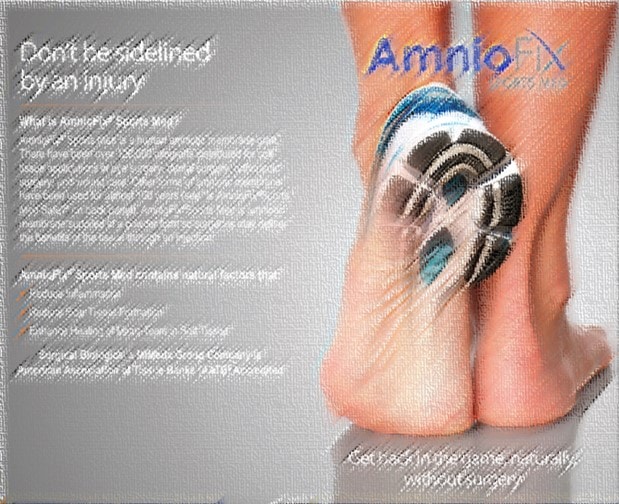Amnio Stem Cells: Are there Stem Cells in Amniotic Tissue being Used by Sports Med Doctors?
What are amnio stem cells? I’ve been asked by many patients lately about the use of amniotic “stem cells” for orthopedic or sports injuries. I’ve been approached by numerous sales reps in the past several years (two in the last week) to begin using this miracle of modern medicine. So what is it?
When a child is born, he or she is surrounded by an amniotic covering, a bit like a water balloon. When this sack breaks open, the pregnant mother’s “water breaks”. The membrane that makes up the broken water balloon can be harvested and processed for tissue. Traditionally, this tissue was used in neurosurgery to repair the covering of the spinal cord and nerve roots, called the dura. This is because it had a similar consistency to that covering. However, this past five years that tissue has been “decellularized” (usually by freeze drying) and then chopped up. This means it no longer has any cells at all, as the process is meant to kill the cells. Some companies chop the tissue so fine (called micronized), that it can be injected like a liquid. Some companies have also chosen to recover and sell the amniotic fluid (the water in the water balloon).
First, chopped up, freeze dried amniotic tissue is a not a stem cell therapy. There are no cells at all, just what’s called “extra-cellular matrix”. This is the substrate tissue in which the living cells used to reside. If you read these company’s brochures, this is exactly what you’ll see. For example, one company sells a product called AmnioFix. It’s sales brochure for sports medicine shows that the chopped up amniotic membrane contains growth factors (like Platelet Rich Plasma) and collagen (the stuff most of your soft-tissues are made of).
So why is chopped up membrane special? Why is it being touted as a stem cell therapy when there are no living cells at all? First, the fact that the tissue contains growth factors and that there’s an abundant and easy to access supply of growth factors in your blood platelets means that there’s really nothing special about growth factors from amniotic membrane. Remember that growth factors act like espresso shots for cells, making them work harder to repair damage. So if the focus is growth factors, using your own blood is far more cost effective and the levels of growth factors can be adjusted at will through simple concentration of platelets (more concentrated platelets equals more growth factors). Why this is also being touted by many physicians as a stem cell therapy is a mystery. There are no living cells at all, certainly not stem cells.
How about the fluid from the water balloon (amniotic fluid)? There’s at least one company selling that fluid, but if you look at their brochure, it also only talks about growth factors and collagen. In fact the term cell or stem cells is nowhere to be found.
So why would a doctor pay a big price tag of 1-2 thousand dollars for these birth tissues? The one place where they could have value is in helping old cells feel young again, although there’s little tangible proof yet that this happens in the body. In vitro (meaning in a lab experiment), some researchers have reported that exposing old cells to young extra-cellular matrix (like the amniotic tissues and fluid above), does seem to make old cells behave like young ones. So might the real value of these tissues be to rejuvenate the stem cells of older patients? This is something we have on the docket to test in our advanced research lab this next few months. If it works in our hands with old cells, we may start a comparison trial between an orthopedic stem cell procedure with and without these tissues. Even with a positive lab result, it’s unknown if this stuff is worth the cost.
The upshot? There are no amniotic nor fetal stem cells being used in the US from these tissues at this point. Most of the “stem cell therapy” claims being thrown around by physicians using these materials aren’t accurate. There may well be a place for these injectables, but using them for their growth factors when all patients have an abundant supply of growth factors in their blood platelets that can be concentrated to any desired level, doesn’t seem to have value. There may well be value in these tissues, just not the one the sales brochures and reps are selling. However, like everything we do, we’ll use our advanced lab facilities to check whether or not any of this holds water before using this stuff in patients.

NOTE: This blog post provides general information to help the reader better understand regenerative medicine, musculoskeletal health, and related subjects. All content provided in this blog, website, or any linked materials, including text, graphics, images, patient profiles, outcomes, and information, are not intended and should not be considered or used as a substitute for medical advice, diagnosis, or treatment. Please always consult with a professional and certified healthcare provider to discuss if a treatment is right for you.

